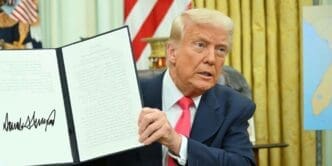The upcoming monthly inflation report is set to reveal critical insights into whether U.S. companies are passing along the costs of President Donald Trump’s increased import duties to consumers. Scheduled for release by the Bureau of Labor Statistics, the report is anticipated to show a rise in the Consumer Price Index (CPI) for May, with a projected year-over-year increase of 2.4%, up from 2.3% in April. Core inflation, excluding volatile food and energy prices, is expected to grow by 2.9% over the same period, higher than April’s 2.8%.
The impact of President Trump’s tariffs has created uncertainty among businesses and consumers, leading to fluctuating confidence levels. With the introduction of the “Liberation Day” tariffs, setting a base U.S. import duty level to 10%, businesses are adjusting to increased costs. Despite the president’s urging for companies to absorb these expenses, many, such as Walmart, have indicated that consumers could soon face higher prices.
The National Federation of Independent Businesses reported a rise in members planning price hikes, with a net 31% indicating such intentions in May, up from 28% in April. This trend highlights the growing pressure on businesses to pass costs onto customers. Notably, U.S. factories have reported the highest incidence of price increases since late 2022.
Economists suggest that any observed respite in price inflation may be due to a slowing economy, characterized by a weakening labor market and reduced consumer spending. Travel-related expenses, including airfare and hotel rates, showed signs of slowing growth as people curtailed their travel.
Analysts predict that the full impact of the tariffs might not be evident until July, drawing parallels to past experiences with tariff-related price hikes. Despite some moderation, consumers are likely to continue feeling the effects of these policies, with the current inflation scenario expected to persist as a significant concern.














